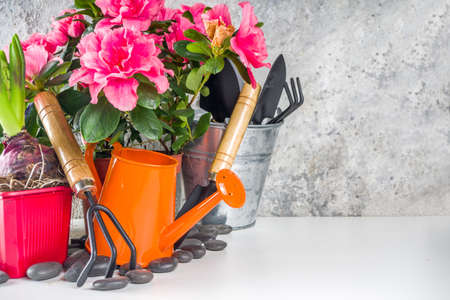1. Understanding the Winter Gardeners Needs
Winter gardening comes with its own set of challenges that go beyond simply keeping warm. For many gardeners, especially those in colder regions of the U.S., snow and ice can make it difficult to access garden beds, tool sheds, and walkways. Proper snow removal isnt just about convenience—its essential for protecting your landscape and making sure your gardening efforts continue smoothly even during the coldest months.
Why Snow Removal Matters for Gardeners
When snow piles up, it can bury raised beds, damage delicate shrubs, and block paths to greenhouses or compost bins. If not cleared properly, compacted snow and ice can lead to long-term damage to soil structure or even break branches on evergreen plants. Removing snow in a timely and effective way helps preserve the health of your garden and keeps your tools accessible when you need them most.
Common Winter Gardening Challenges
| Challenge | Impact on Garden |
|---|---|
| Heavy snowfall covering garden beds | Makes it hard to monitor plant health or apply winter mulch |
| Blocked paths to tool sheds or greenhouses | Reduces access to necessary supplies and equipment |
| Ice accumulation on branches | Can cause breakage or stress to trees and shrubs |
| Frozen compost bins | Slows down decomposition and nutrient cycling |
The Role of Snow Removal Tools in Winter Gardening
To meet these winter-specific needs, gardeners rely on a variety of snow removal tools like ergonomic shovels, electric snow blowers, roof rakes, and ice scrapers. These tools help keep pathways clear, prevent snow from crushing plants, and allow regular maintenance tasks to continue without interruption. Choosing the right equipment can make winter gardening safer and more manageable.
Pro Tip:
Keep a dedicated snow shovel near your garden entrance—not just by your front door—so youre always ready when snow starts falling unexpectedly.
Coming Up Next:
In Part 2, we’ll explore different types of shovels that are especially useful for gardeners working through the winter months.
2. Essential Snow Shovels for Garden Paths and Beds
When winter hits, snow can quickly cover garden paths, raised beds, and delicate landscaping areas. For gardeners who want to keep their outdoor spaces accessible without damaging plants or hardscaping, choosing the right snow shovel is key. Not all shovels are created equal—especially when youre working around sensitive areas where precision and ease-of-use matter.
Choosing the Right Snow Shovel for Gardening Tasks
Unlike heavy-duty driveway shovels, snow removal tools for garden areas need to be lightweight, easy to control, and gentle on surfaces. Here are a few important features to look for:
- Ergonomic design: Reduces strain on your back and arms during repeated use.
- Narrow blade width: Ideal for tight paths and between raised beds.
- Lightweight materials: Aluminum or durable plastic helps reduce fatigue.
- Non-scratch edges: Prevents damage to pavers, wood borders, or plant containers.
Top Snow Shovel Types for Winter Gardeners
| Shovel Type | Best For | Key Features |
|---|---|---|
| Ergonomic Snow Shovel | Frequent use around garden beds and walkways | Bent handle design; reduces back strain |
| Narrow Blade Shovel | Tight spaces between raised beds or stepping stones | Slim blade; easier control in confined areas |
| Plastic Blade Shovel with Metal Edge | Sensitive surfaces like wooden decks or decorative stone paths | Gentle on surfaces; reinforced edge for durability |
| Telescoping Handle Shovel | Compact storage and adjustable reach | Extendable shaft; great for gardeners of all heights |
Tips for Effective Use Around Gardens
- Avoid using metal-edged shovels directly on wooden garden borders or planters.
- Scoop snow gently to avoid pulling up mulch or damaging dormant plants.
- Clear snow early before it compacts and becomes harder to remove.
- If space allows, push snow instead of lifting to reduce physical strain.
Pro Tip:
If you often deal with light snowfall, consider keeping a small handheld shovel near your shed or greenhouse. It’s perfect for clearing narrow footpaths quickly without dragging out a full-size tool.
Did You Know?
Some gardeners use brightly colored shovels not just for style but to easily spot them in the snow!
Choosing the right snow shovel can make winter gardening safer and more manageable. With the right tool in hand, you’ll be able to protect your garden layout while maintaining clear access all season long.
![]()
3. Snow Blowers: Choosing the Right Size and Power
When winter hits hard, a snow blower can be a game-changer for gardeners who need to keep pathways, driveways, and garden beds accessible. But not all snow blowers are created equal. Choosing between electric and gas-powered models depends on the size of your garden area, the typical snowfall in your region, and your own physical comfort when operating machinery.
Electric vs. Gas-Powered Snow Blowers
Each type has its pros and cons. Heres a quick comparison to help you decide which might be better suited for your winter gardening needs:
| Feature | Electric Snow Blowers | Gas-Powered Snow Blowers |
|---|---|---|
| Power Source | Plug-in or battery-operated | Gasoline engine |
| Ease of Use | Lighter, easier to handle | Heavier, requires more strength to maneuver |
| Maintenance | Low maintenance (no oil changes or fuel) | Regular maintenance needed (oil, fuel, spark plugs) |
| Noise Level | Quieter operation | Louder engine noise |
| Best For | Small to medium gardens with light to moderate snowfall | Large gardens or areas with heavy, wet snow |
Selecting the Right Model for Your Garden
If you have a small urban garden or live in an area that gets occasional light snow, a cordless electric snow blower might be all you need. Theyre lightweight and easy to store in a garage or shed. On the other hand, if you maintain a large property or live in northern states like Minnesota or upstate New York where snowfall is frequent and heavy, a gas-powered model will offer the power and clearing width you need.
Consider Your Physical Capabilities
If pushing heavy equipment isnt ideal for you, look for features like self-propelling wheels or ergonomic handles. Electric models are generally easier on the body but may require extension cords unless theyre battery-operated. Gas models give you more freedom of movement but are physically demanding and noisier.
Pro Tip:
If youre unsure about committing to one type, check if local hardware stores offer rentals. This gives you a chance to test different models before buying.
Choosing the right snow blower can make winter gardening much easier and safer while helping protect your plants from getting buried under piles of snow.
4. Ice Melt and De-icing Products Safe for Plants
Winter gardening doesn’t stop at shovels and snow blowers—keeping your pathways and garden walkways safe is just as important. But not all ice melt products are created equal. Many common de-icers contain harsh chemicals that can harm your soil, damage plant roots, and injure nearby shrubs or perennials. If you’re a gardener who wants to protect your landscape while staying safe on icy days, it’s essential to choose plant-friendly de-icing options.
Why Standard Ice Melts Can Be Harmful
Most traditional ice melts include ingredients like sodium chloride (rock salt) or calcium chloride. While effective at melting ice, these compounds can:
- Alter soil pH, making it less hospitable for plants
- Cause root dehydration by drawing moisture out of the soil
- Damage the foliage and stems of nearby plants
Over time, repeated use of these products can lead to long-term damage in your garden beds and lawn edges.
Plant-Safe Ice Melt Options
Fortunately, there are several eco-friendly alternatives designed specifically for gardeners and environmentally-conscious homeowners. These products are typically labeled as “pet-safe” or “plant-safe.” Look for ice melts that contain:
- Calcium Magnesium Acetate (CMA): A biodegradable compound that is less corrosive and safer for vegetation
- Potassium Chloride: Milder than rock salt and less harmful to plant life
- Urea: Gentle on plants, though best used in moderation due to its nitrogen content
Comparison of Ice Melt Products
| Product Type | Safe for Plants? | Main Ingredient | Effectiveness in Low Temps |
|---|---|---|---|
| Sodium Chloride (Rock Salt) | No | Sodium Chloride | Up to 15°F (-9°C) |
| Calcium Magnesium Acetate (CMA) | Yes | CMA Blend | Up to 20°F (-6°C) |
| Potassium Chloride | Moderately Safe | KCl | Up to 12°F (-11°C) |
| Urea-Based Melts | Yes (with caution) | Urea (Nitrogen) | Up to 15°F (-9°C) |
Tips for Using Ice Melt Responsibly in the Garden
- Avoid overapplication: Use only the amount needed to prevent buildup in the soil.
- Create buffer zones: Shovel snow away from garden beds before applying any de-icer near paths or driveways.
- Sweep up residue: After the ice melts, sweep away leftover product to prevent it from leaching into the soil.
- Use sand or gravel: For added traction without chemical impact, sprinkle sand or small gravel on icy areas.
Selecting the right ice melt product helps preserve your winter garden’s health while keeping you safe from slips and falls. With a little planning, you can manage snow and ice without sacrificing your landscape’s beauty come spring.
5. Storage and Maintenance Tips for Snow Removal Gear
Taking good care of your snow removal tools not only saves you money in the long run but also ensures they’re ready to go when the next winter storm hits. Whether youre using a classic snow shovel or a powerful snow blower, proper off-season storage and regular maintenance are key. Here’s how you can keep your winter gear in top shape all year round.
Clean Before You Store
Before packing away your snow tools for the season, give them a thorough cleaning. Salt, moisture, and debris can cause rust or deterioration over time.
- Shovels: Rinse with warm water and mild soap. Dry completely to prevent rusting.
- Snow Blowers: Remove any remaining snow or ice, and wipe down all surfaces. Clean out the chute and auger area.
- Ice Scrapers & Pushers: Check for cracks and clean thoroughly before storing.
Maintenance Must-Dos
A little seasonal maintenance goes a long way in keeping your gear functional and efficient. Use this checklist to stay on track:
| Tool | Maintenance Tip |
|---|---|
| Snow Shovel | Tighten loose screws or bolts, sand any rough handles, apply a light coat of oil to metal parts to prevent rust. |
| Snow Blower | Change the oil, drain fuel or add stabilizer, check spark plugs, inspect belts and replace if worn. |
| Ice Melt Spreader | Rinse thoroughly to remove salt residue, lubricate moving parts. |
Smart Storage Solutions
Your tools will last longer if theyre stored properly during the off-season. Avoid tossing them in a damp garage corner—here are some better ideas:
- Hang It Up: Use wall hooks or pegboards to hang shovels and scrapers off the ground.
- Shelter Your Snow Blower: Store indoors if possible, or use a weatherproof cover to protect it from dust and moisture.
- Labeled Bins: Keep smaller items like gloves, ice melt scoops, and accessories in labeled containers for easy access next season.
Quick Mid-Winter Checkups
If youre in an area where winter drags on, it’s worth doing a quick mid-season inspection of your tools. Look for signs of wear or damage so you can make repairs before they become bigger problems.
A Little Care Goes a Long Way
Your snow removal tools work hard every winter—give them some TLC now so they’re ready to go when that first flake falls again. A few simple steps in storage and maintenance can mean years of reliable performance out in your garden paths and driveways.


